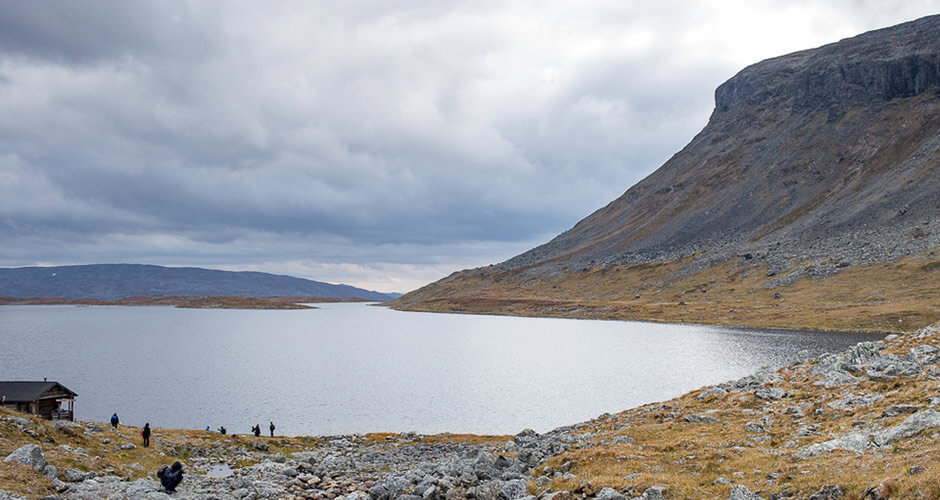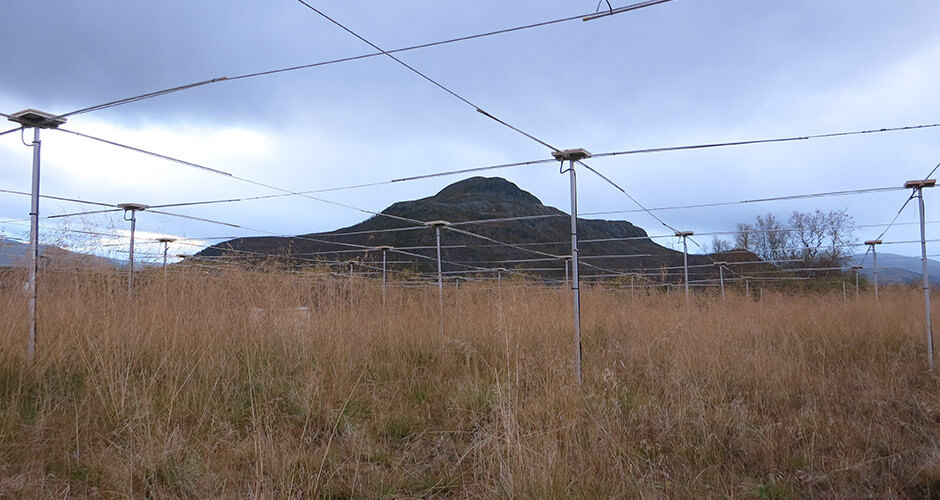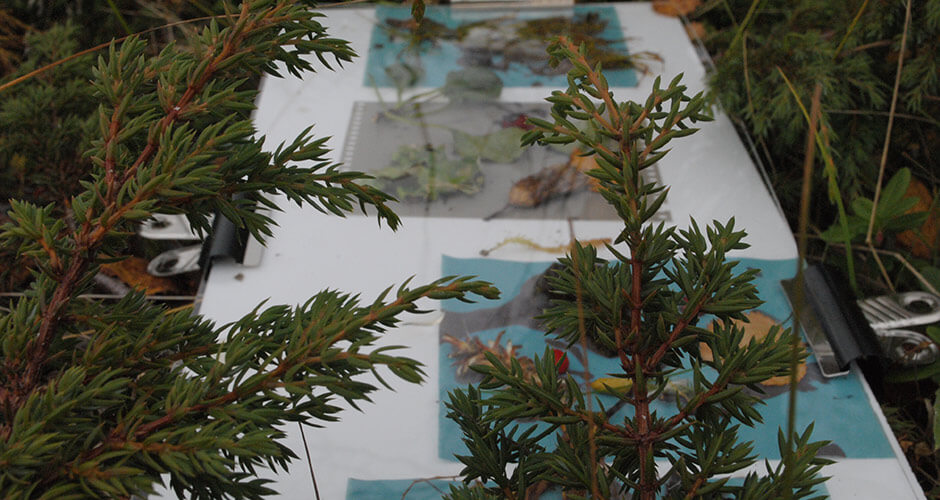Words by Hannah Star Rogers & Bilge Hasdemir

The Bioart Society, based in Helsinki, Finland, is the foremost bioart organisation for individual artists worldwide. It sponsors art-science collaborations emphasising lab techniques, field experiences, digital experimentation, and innovative programming. More than 80 members worldwide work to share ideas, resources, and their new artworks with the organisation.
TBS was established in May 2008 at the Kilpisjärvi Biological Station in Lapland, Finland, so the organisation has a longstanding interest in place as inspiration, catalyst, container, method, and result. The Bioart Society continues developing, producing and facilitating activities around art and natural sciences, emphasising biology, ecology and life sciences. Together with the Kilpisjärvi Biological Station of the University of Helsinki, the Bioart Society organises Ars Bioarctica, an art & science residency and related programming focusing on the sub-arctic environment.
Field_Notes: Ecology of Senses is an art & science field and laboratory group residency organised by the Bioart Society at the Kilpisjärvi Biological Station in Lapland/Finland. In September 2018, the group convened for its intermittent meeting of more than 30 artists, scientists, and practitioners to experience the Arctic Circle’s ecology, biology, and people while considering our working words: Ecology of Senses. Field Notes is structured through themes which are suggested by each group leader and shaped by the interests and skills of the group.
Five groups, hosted by artist and agrarian Judit van der Elst, performance bioartist Kira O’Reilly, geophysicist and diviner Martin Howse, Hackateria co-founder and DIY soil practitioner Marc Dusseiler and STS scholar Hannah Star Rogers led groups into the field to discover new methods and practices while being inspired to develop artworks and art-science collaborations by the environment and infra-culture of Lapland.
As STS scholars who focus on the arts, we were part of the Second Order group tasked with observing and intervening in the other group’s practices. As visitors to the groups, we took up participant observer techniques and asked questions of individual artists and the groups throughout their time in Lapland. Two-plus decades of work on the intersection of art and science leave a little question about the value of these practices and that interesting flows of practices, protocols, and philosophies constantly move between art and science.
Some of these overlaps result from facilitated collaborations, while others emerge in the wild following a myriad of institutional, social, and personal interest logic. So why do artists go into the field, and what do they do once they are there? The format of Field_Notes, as its name suggests, invites observers to compare the work scientists, particularly biologists and ecologists, do at field stations with that of the artists who participated in this week-long event, which falls along the spectrum of fieldwork, a residency, and a Bioart Society conference.
While we were not privy to the particular actions of scientists at the station, our previous observations of fieldwork by scientists compare reasonably with the work the participating artist undertook. Most artists spend most of their time in the field with apparatus that extends their senses: wandering the hillsides and lakes, collecting data on wind speed, images of lichens and algae, measuring pH, and flying drones over the nearby Saana mountain.
The remainder of the time was spent reviewing and discussing these findings with the group and in several spectacular evening programs where groups presented their findings and proto artworks created from their field activities. Some took the form of exhibits and experiences, while others invited interaction from other attendees.

If anything sets the artist’s practices apart from those of scientists, it is the amount of time spent in direct contact with the environment engaging in open, undirected observation. While these types of observations remain an idyllic standard for field biologists and ecologists, they were more obviously and readily undertaken by the artists who sat for long hours near the lake, hiked considerable distances with unclear objectives or to observe particular views, breathed with the trees, engaged in herding behaviour to familiarise themselves with hillsides and one another, and wandered the landscape with an eye to possibly natural phenomena which could be used for divination.
While these activities certainly connect theoretically with notions of feelings, the environment or sensing through the body or yet undiscovered senses, they are a significant departure from the expectation of directed observation usually present in contemporary scientific work. In the discussion, bodily experience and those experiences mediated through secondary apparatus were given approximately equal weight. Many of these were connected with the observations of others, which may not have been similar in kind or result. In some cases, findings and personal experiences of the environment or particular organism which connected neither with embodied nor instrumented experiences were ascribed particular value.
In this way, Field Notes is an important platform for art and science practitioners to explore various potentials and possibilities of multifaceted and multiple forms of relations between art and science. As much as art-science collaborations often emphasise the dynamic nature of putting artists and scientists together, many of the participants are hybrid in their individual practices and affiliations. During the residency, we observed that the division between two cultures, which are science and humanities, was deconstructed if not resolved.
Considerable effort was invested to go beyond the disciplinary boundaries. Clearly, these silos had lost their reliability as different aspects of fragmentary nature(s) were explored. Scientific techniques and ways of thinking were implicitly and explicitly hacked and challenged by using the body as a tool and the value placed on experience. The field of scientific knowledge was extended to new alternative and novel ways by opening up these potentials, most of which remain covered in the positivist and traditional institutional realm(s).
For most participants, following senses was considered a central way of negotiating with the representations of reality. During the residency, senses led to a discovery towards the undiscovered, marginalised and even the unfamiliar. Being immersed in the lives of fungi, microorganisms, lichens, plants, trees, and slime moulds, practitioners explored shifting assemblages and complex relations which are forming Life. Accordingly, this study can also be called as the anthropology of life, multispecies ethnography- a study beyond humanity.

Multispecies approaches in anthropology and ethnography are expressly about multiplying perspectives which can discover similarities, diversities, connections and relations at different levels. This sensory ethnography was thus conducted by thinking with nonhuman things, objects and relations within reciprocal influences. By enhancing conventional methods of ethnography, Ecology of Senses provided valuable insights into alternative epistemologies and ontologies.
And those alternatives were, first and foremost outcomes of a research process led by co-production and collaboration among practitioners with different backgrounds, motivations and interests. One could thus truly observe that different knowledge practices brought different worlds into being, providing valuable insights into life’s emergence in different forms, multispecies assemblages and divine ways. And the methods to probe webs of life ranged from direct observation of inter-/multi-species connections and exploration of possibilities in different ecosystems to engaging in more-than-human social worlds.
What life is and how it can be known were thus re-imagined during the field research. For instance, while perception practices were challenged with life’s impression in wax, sensing fields were extended by exploring ways of sensing the earth’s magnetic field as birds can. Digging the soil, on the other hand, was a discovery of hidden worlds of microorganisms and micro-ecologies. In this line, diversity in the methods and among the research outcomes enabled us to go beyond the partial representation of the empirical world.
From our observations of Ecology of the Senses, it appears that artists go into the field for much the same reason scientists do: to observe the non-human (living and nonliving) and their relationships in situ, to collect data, and to validate ideas conceived in laboratories or through textual analysis of other scientific literature. However, somewhat ironically, the development of contemporary art means that some of the openness to observations outside of data taken through bodily observation or instruments remain open to artists and, indeed, are considered among the most valuable field experience.
This art & science residency’s structure highlighted the importance and practicality of overcoming a form of research based on dichotomic understandings between humans and nonhumans, culture and nature, and art and science. And henceforward, regardless of the aims and elements that drove it, this field research transformed pre-existing categories into relational perspectives. Field_Notes: Ecology of Senses was thus an arena for open dialogues among participants and different disciplinary fields, fostering transdisciplinary collaborations and thereby cracking the potentials of art & science with creativity, sensitivity, query and concern.






